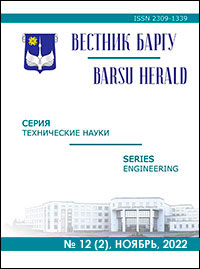STUDY OF MODEL INDUCTOR SYSTEMS BASED ON A FIBROUSNANOCOMPOSITE OF A FINELY DISPERSED COPPER-NIOBIUM ALLOY
Keywords:
magnetic pulse processing; strong pulsed magnetic field; inductor; nanocompositeAbstract
The results of experimental studies of the strength and conductive properties of the material for the manufacture of high-strength inductor systems using the technology of elements pressing mixtures of fine nanostructured wire with copper powder pressed into a compact on a magnetic pulse press with subsequent heat treatment are presented. The
inductor systems application area in production is shown. The results of the conducted research on model inductor systems when generating a strong magnetic field at different frequencies has showed that the use of a fine Cu-Nb alloy
allows to increase the resistance of the current line in 3 times, compared with a copper bus bar current line and allows to create inductors with a high resource for metal processing by pressure: stamping of thin-sheet materials and molding of
complex shape products; processes for obtaining strong, dense and hermetic joints of tubular blanks.
Fig. 6. Table. 1. Ref.: 7 titles.
Downloads
Published
Issue
Section
License
Copyright (c) 2023 Вестник БарГУ Серия "Технические науки"
Это произведение доступно по лицензии Creative Commons «Attribution-NonCommercial» («Атрибуция — Некоммерческое использование») 4.0 Всемирная.
Авторы сохраняют за собой право заключать определенные договорные соглашения, касающиеся неисключительного распространения опубликованной версии работы (например, размещать ее в институциональном репозитории, публикация в книге) со ссылкой на ее первоначальную публикацию в этом журнале.





